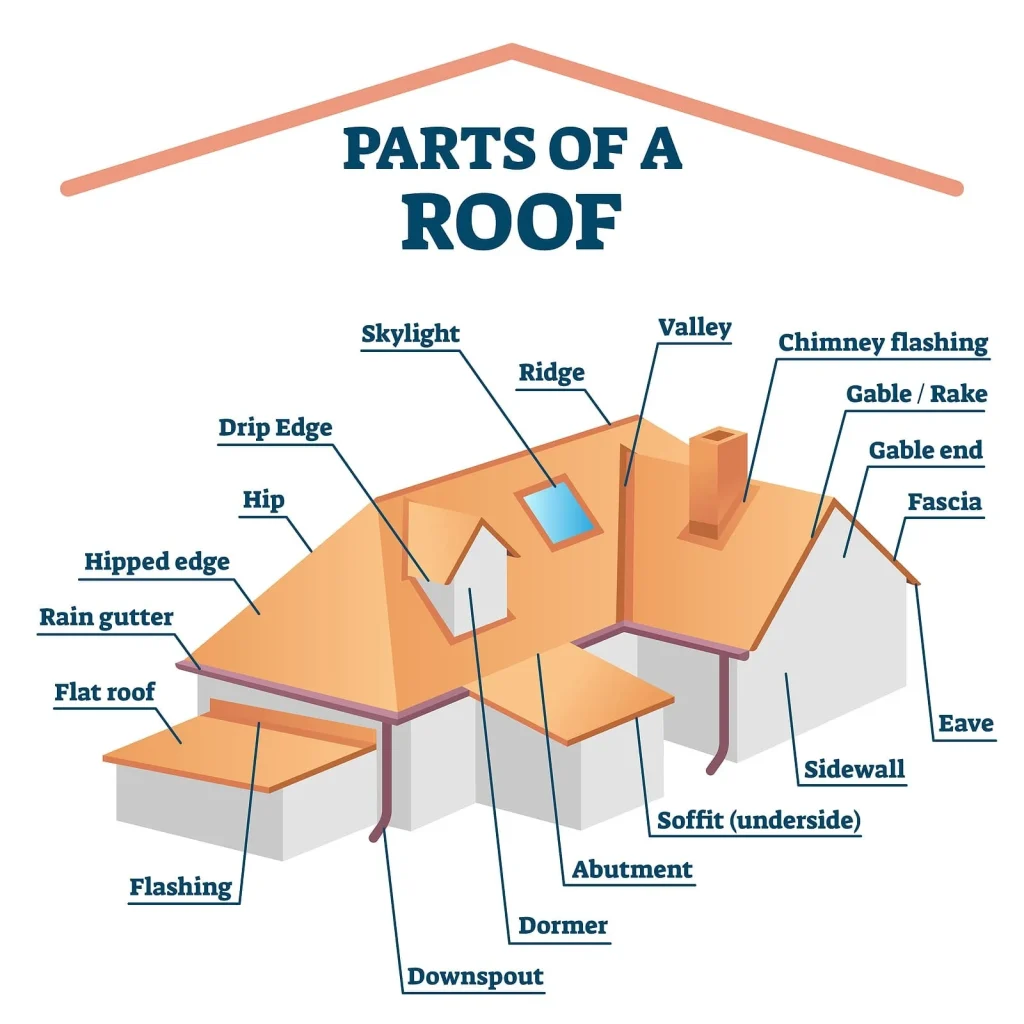Metal roofs have gained renown due to their durability, longevity, and aesthetic appeal. They consist of various components that work together to create a protective barrier against the elements. If you find yourself intrigued by the terminology linked to metal roofing, you’ve landed in the appropriate location. In this article, we’ll delve into the different parts of a metal roof and what each component is called.

The Anatomy of a Metal Roof
- Metal Panels: The main visible element of a metal roof is the metal panels themselves. Typically, manufacturers craft these panels from materials such as steel, aluminum, or copper. They come in various profiles and sizes, contributing to the roof’s overall look.
- Ridge Cap: Installed along the roof’s ridge, where two slopes converge, the ridge cap constitutes a specialized metal component. Its purpose is to seal the peak of the roof, preventing water infiltration and enhancing the roof’s appearance.
- Eave Trim: Installed along the roof’s bottom edge, the eave trim, alternatively referred to as eave flashing, fulfills its role. It helps direct water away from the fascia and prevents water from seeping under the metal panels.
- Gable Trim: Gable trim is used to finish the edges of the gable (the triangular portion of a wall between the edges of intersecting roof pitches). It provides a clean and weatherproof finish.
- Valley: The valley is the area where two roof slopes intersect and create a trough-like structure. In this area, the installation of a valley flashing serves to guide water away and thwart the occurrence of leaks.
- Ventilation: Ventilation components include ridge vents, soffit vents, and other types of exhaust vents. These components ensure proper air circulation within the attic space, reducing moisture buildup and preventing damage to the roof deck.
Fasteners and Accessories
- Screws and Fasteners: Screws and fasteners play a critical role in securing the metal panels to the roof deck. Their design incorporates the ability to withstand various elements while offering a secure attachment.
- Sealants and Weatherproofing: Sealants play a role in establishing watertight seals at joints, seams, and around penetrations like vents and chimneys. Proper sealants ensure water does not infiltrate the roof system.
Underlayment
- Roof Underlayment: Although not a metal component, the roof underlayment is a crucial part of the roofing system. It involves installing a water-resistant barrier between the roof deck and the metal panels. It provides an extra layer of protection against leaks and moisture.
Conclusion
In conclusion, a metal roof is composed of several components that work together to create a durable, weather-resistant, and visually appealing roofing system. Understanding the terminology associated with these components can help you communicate effectively with roofing professionals and make informed decisions about your roofing project. Whether you’re considering a metal roof installation or simply curious about the parts of a metal roof, this knowledge provides valuable insights into the intricate makeup of this roofing solution.



Leave a Reply